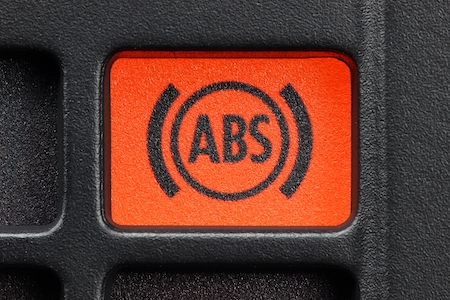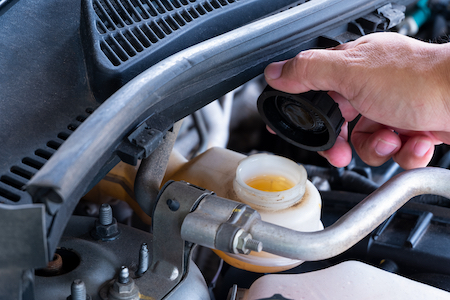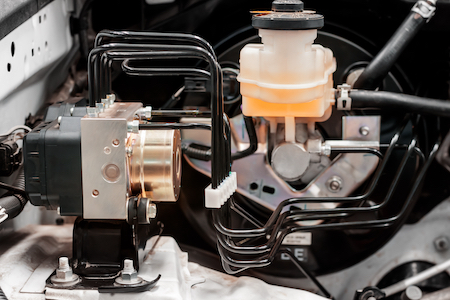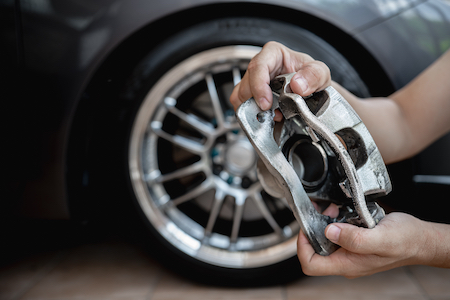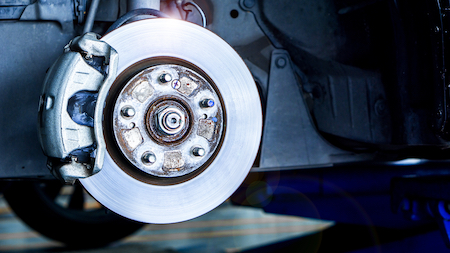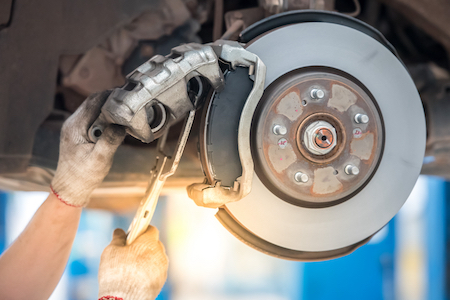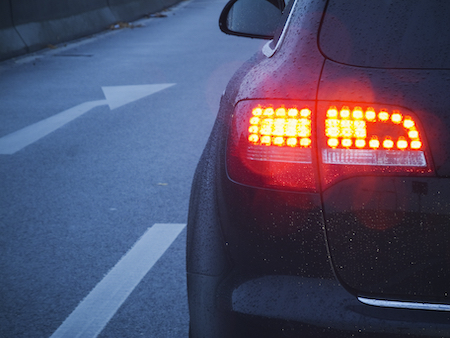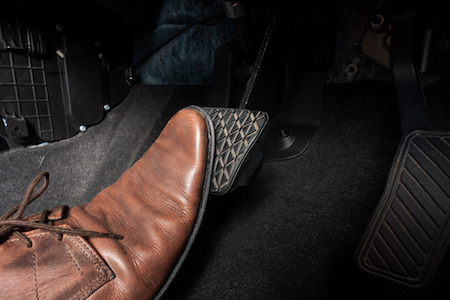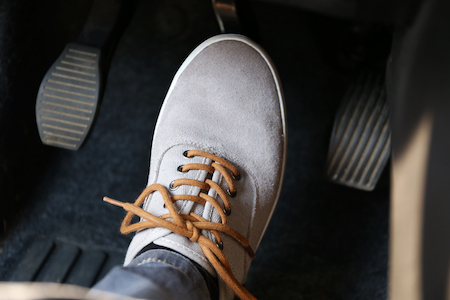Love puzzles? Want a challenge? The average car today has around 30,000 parts inside. The engine alone has thousands of tiny components that all come together to create a powerful display of energy that allows you to move throughout your days.
Yet anytime you have that many parts coming together in one place, eventually, you’ll have a problem. If one bolt comes loose, it can bring an entire system to a grinding halt. And on a moving vehicle, that can be a big problem.
Imagine your anti-lock brake system doesn’t work. It’s cold outside. The streets are icy. You tap the brakes – and they don’t work.
That’s just one of the reasons maintenance is essential. If you pay attention to your anti-lock brake system before you need it, you’ll reduce the chances of having a problem when you need it most. Here’s what maintenance looks like on your anti-lock brake system.
What are anti-lock brakes
Anti-lock brakes, also known as ABS, are a safety feature in today’s modern vehicles. They help prevent the wheels from locking up during sudden braking. While this technology was first introduced in the late 1920s, it wasn’t until the 1970s that ABS became widely available in consumer vehicles.
When a vehicle’s wheels lock, the driver can lose control of the car. It can skid, making it difficult to steer or stop. Anti-lock brakes work by preventing this from happening. When the driver taps the brakes, ABS rapidly pumps the brakes, allowing the wheels to continue rotating. This allows the driver to maintain steering control, allowing the vehicle to move more quickly and safely.
ABS is made up of several vital components. Wheel speed sensors are located at each wheel. They monitor the speed of the rotation, sending signals back to the ABS control module, which processes the information and determines if one or more wheels are locking up.
If the control module detects a wheel lock up, it sends a signal to the brake actuator, which rapidly pumps the brakes. The brake actuator uses a pump to pressurize brake fluid, which causes the brakes to be applied and released in rapid succession. This helps prevent the wheels from locking up, and allows the driver to maintain control of the vehicle.
Anti-lock brakes are beneficial during all low-traction conditions, such as rain, snow, or ice. When the roads are slippery, it’s easier for the wheels to lock up because there’s less friction between the tires and the road. ABS helps by keeping the wheels steady, allowing the driver to maintain control of the car.
7 maintenance tips for your anti-lock brake system
Anti-lock brakes are a critical safety feature in modern vehicles that help prevent the wheels from locking up during sudden braking. Regular maintenance is essential to ensure that your anti-lock brakes are working properly. Here are seven maintenance items that you should do to keep your anti-lock brakes working well:
Check the brake fluid level
ABS relies on brake fluid to function correctly. The brake fluid level should be checked regularly, and topped off if necessary. If the brake fluid is low, it could indicate a leak in the system, which should be repaired as soon as possible. Remember, your ABS needs the right fluids to keep it running smoothly.
Inspect the brake pads and rotors
The brake pads and rotors are the components that come into contact with the wheels to slow them down. Over time, the brake pads will wear down, and the rotors may become corroded or damaged. Inspecting the brake pads and rotors will help you identify any issues before they become a problem. Think of it as a check-up for your ABS.
Check the wheel speed sensors
The wheel speed sensors are responsible for monitoring the speed of the wheels and sending signals to the ABS control module. If a sensor is faulty, the ABS system may not function properly. Check the sensors regularly for any signs of damage or wear and tear. These sensors are the eyes of your ABS, so make sure they’re working.
Check the ABS control module
The ABS control module is the brain of the system. It’s responsible for processing the information from the wheel speed sensors and determining if one or more wheels lock up. If the control module is malfunctioning, the ABS will not work. It’s essential to keep the brain of your ABS in good shape.
Check the brake actuator
The brake actuator is a hydraulic component that uses a pump to pressurize the brake fluid, which causes the brakes to be applied and released in rapid succession. Check the brake actuator for any signs of damage or wear and tear. This is the muscle of your ABS, so make sure it’s functioning.
Check the brake lines and hoses
The brake lines and hoses deliver brake fluid from the master cylinder to the brakes. Check the cables for any signs of leakage, cracking, or damage. These are the veins of your ABS, they need to be in good condition to function correctly.
Have the ABS inspected by a professional
Have your ABS inspected by a professional mechanic regularly. They will have the proper tools and knowledge to diagnose issues with the system and make necessary repairs. Always consult your vehicle’s owner’s manual for recommended maintenance schedules and guidelines.
It’s also worth mentioning that if the ABS warning light comes on in your vehicle’s dashboard, it’s an indication that there may be an issue with the ABS and you should take it to a professional to diagnose and repair the problem as soon as possible.
When was the last time you scheduled a maintenance visit for your anti-lock brake system?
Regular maintenance is essential to ensure that your anti-lock brakes are working properly. It ensures that your anti-lock brakes are always ready to perform when needed.
Remember to consult your vehicle’s owner’s manual for recommended maintenance schedules and guidelines. Not sure when they were last inspected? Don’t put it off; schedule it today.
It’s the best way to ensure your vehicle is safe whenever you take it out for a drive.

